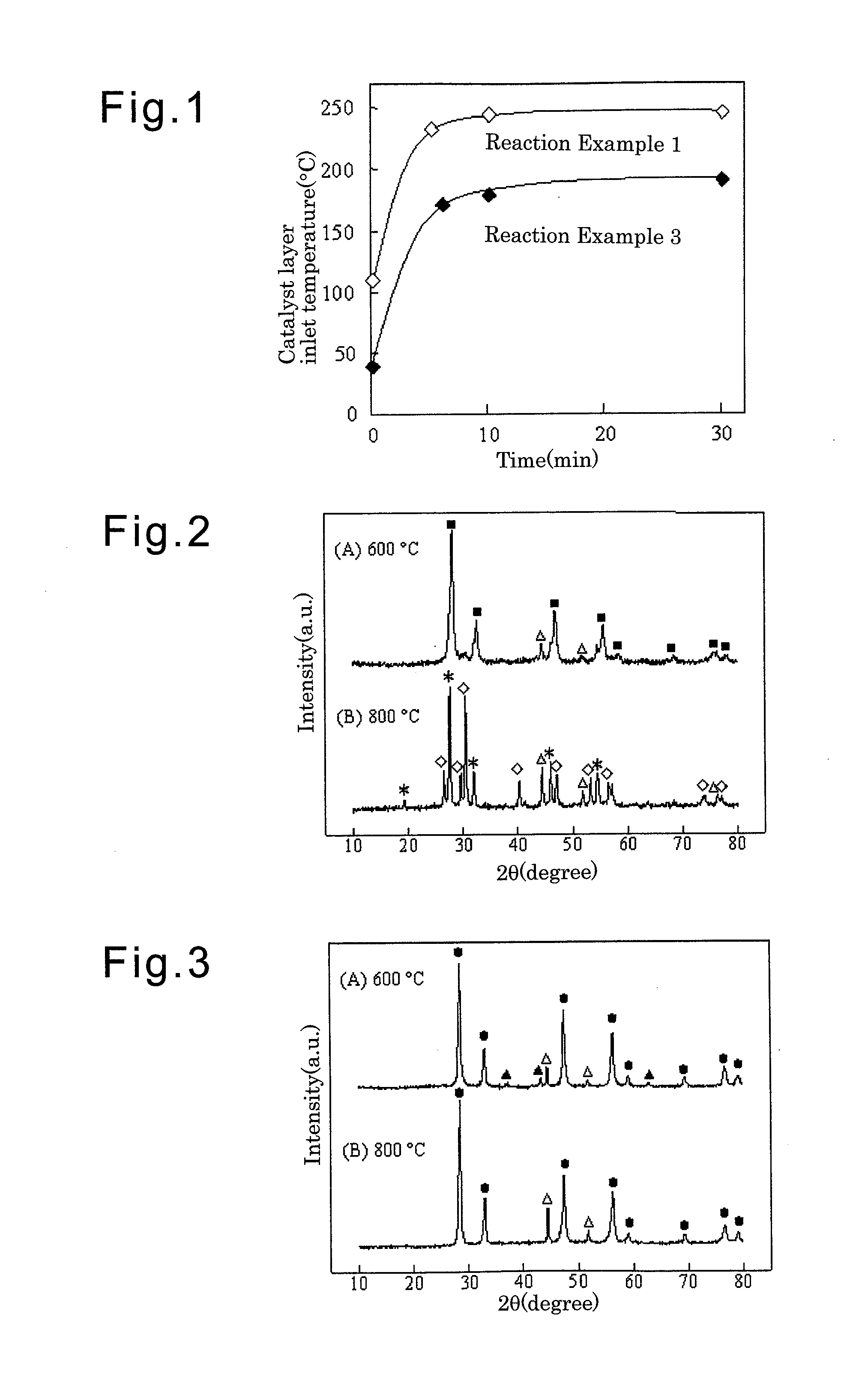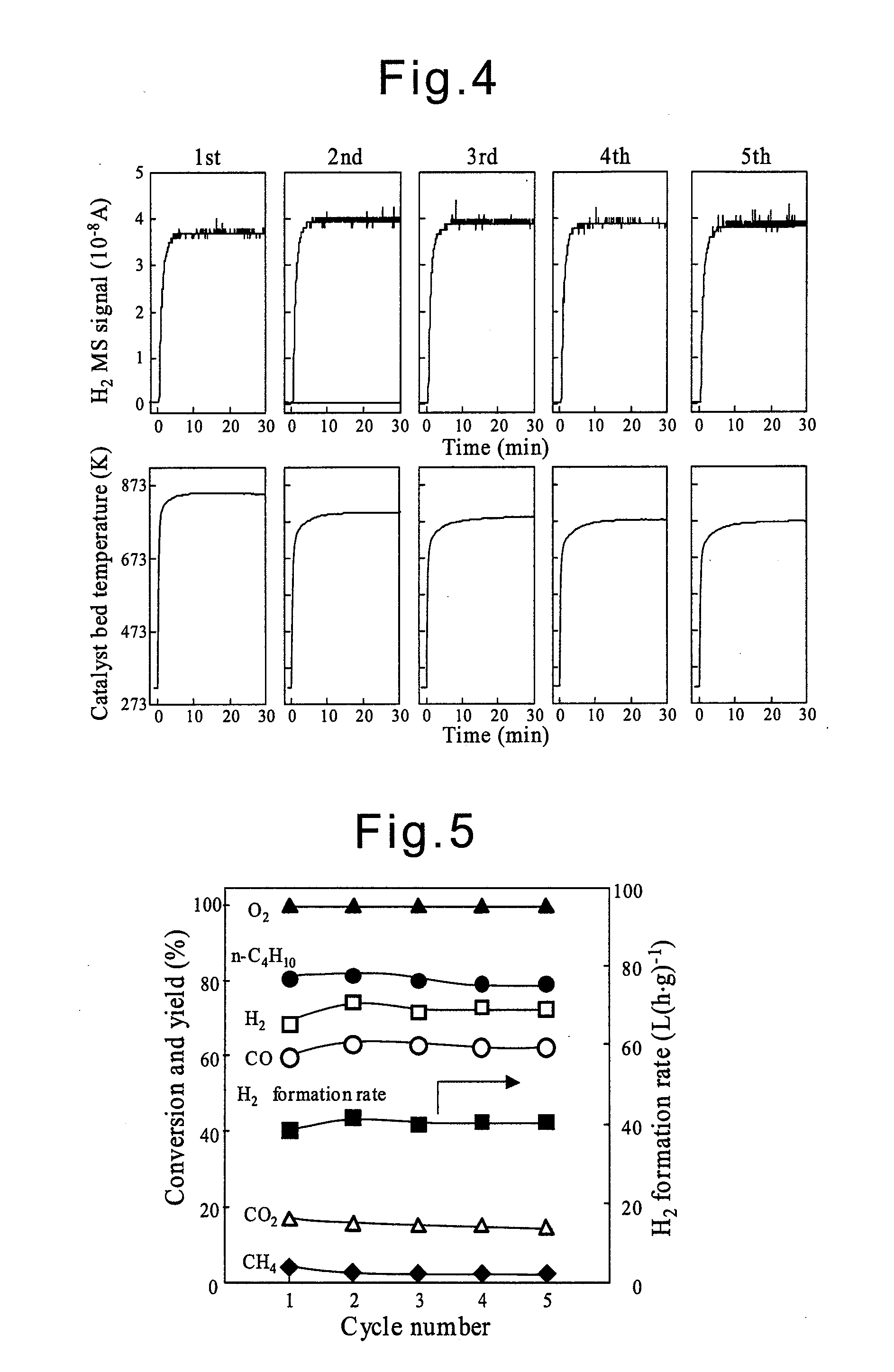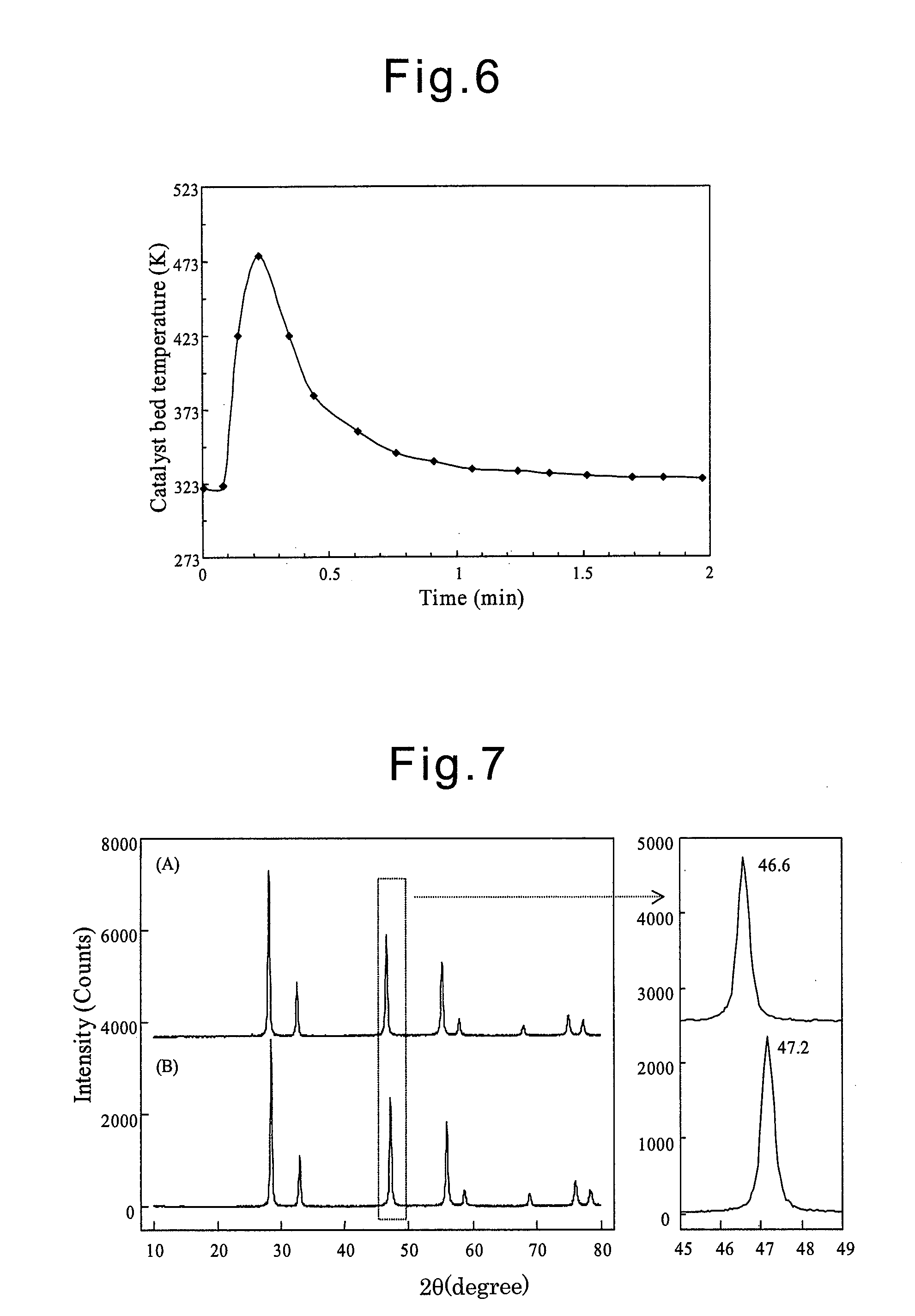Hydrogen production catalyst, production method of the same and hydrogen production method
a technology of hydrogen production method and hydrogen production method, which is applied in the direction of physical/chemical process catalyst, metal/metal-oxide/metal-hydroxide catalyst, bulk chemical production, etc., can solve the problems of frequent starting and stopping of devices, problems affecting the use of devices in areas without power and use, and considerable problems
- Summary
- Abstract
- Description
- Claims
- Application Information
AI Technical Summary
Benefits of technology
Problems solved by technology
Method used
Image
Examples
example 1
Catalyst Precursor Preparation Example 1
20 wt % Ni / CeO2
[0053]CeO2 (Japan Reference Catalyst JRC-CEO-3) was used for the support. Using a furnace the CeO2 was calcined in air for 5 hours at 800° C. to obtain calcined CeO2.
[0054]13.3 g of nickel nitrate Ni(NO3)2.6H2O (Wako Pure Chemical Industries) were dissolved in distilled water in a 0.3 liter beaker and brought to a final volume of 0.15 liters. This was designated as Ni precursor aqueous solution (A).
[0055]Next, 10 g of the calcined CeO2 were weighed out and added to the beaker containing the Ni precursor aqueous solution (A). After stirring this aqueous solution for 12 hours at room temperature, the beaker was heated and stirred to remove the water. Subsequently, a catalyst precursor was obtained by drying in an oven at 60° C. for 24 hours.
[0056]The catalyst precursor was crushed in a porcelain mortar and placed in a Pyrex® glass container, and the glass container was placed in a horizontal tube furnace, heated to 450° C. at a h...
preparation example 2
Catalyst Precursor Preparation Example 2
20 wt % Co / CeO2
[0057]A catalyst was prepared using the same procedure as that of Catalyst Precursor Preparation Example 1 with the exception of using 13.6 g of cobalt nitrate Co(NO3)2.6H2O (Wako Pure Chemical Industries) instead of nickel nitrate Ni(NO3)2.6H2O (Wako Pure Chemical Industries).
preparation example 3
Catalyst Precursor Preparation Example 3
1 wt % Rh / CeO2
[0058]A catalyst was prepared using the same procedure as that of Catalyst Precursor Preparation Example 1 with the exception of using 0.26 g of RhCl3.3H2O (Soekawa Chemical) instead of nickel nitrate Ni(NO3)2.6H2O (Wako Pure Chemical Industries).
PUM
| Property | Measurement | Unit |
|---|---|---|
| temperature | aaaaa | aaaaa |
| temperature | aaaaa | aaaaa |
| temperatures | aaaaa | aaaaa |
Abstract
Description
Claims
Application Information
 Login to View More
Login to View More - R&D
- Intellectual Property
- Life Sciences
- Materials
- Tech Scout
- Unparalleled Data Quality
- Higher Quality Content
- 60% Fewer Hallucinations
Browse by: Latest US Patents, China's latest patents, Technical Efficacy Thesaurus, Application Domain, Technology Topic, Popular Technical Reports.
© 2025 PatSnap. All rights reserved.Legal|Privacy policy|Modern Slavery Act Transparency Statement|Sitemap|About US| Contact US: help@patsnap.com



